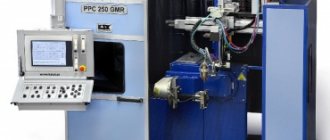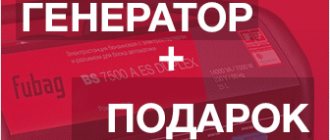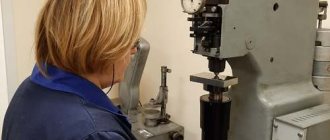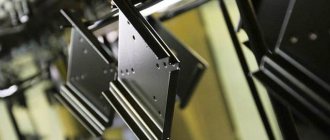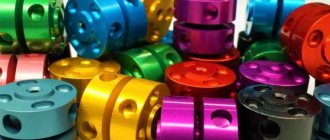Metal spraying is a technology for changing the surface structure of a product in order to acquire certain qualities that increase performance characteristics. Processing is performed by applying a homogeneous metal layer to a part or mechanism. Special powder compositions are used as consumables, which are subjected to heat treatment and give them significant acceleration. Upon impact contact with the surface, particles are deposited on the plane.
The technology appeared at the beginning of the 20th century as an alternative to traditional methods of surface modification of metals. As methods of spraying metal products were studied and developed, a separate industry was formed - powder metallurgy. This is a technology for producing powders for making various products from them.
In modern industry, metal spraying is considered one of the most economical processing methods. Compared to bulk alloying, the technology makes it possible to obtain the necessary performance properties of the surface at lower costs.
The essence and purpose of metal spraying
The application of protective coatings to metal is necessary for many industries. The purpose of spraying products is to increase the basic service life of the workpiece. The protective layer provides reliable protection against the following harmful factors:
- exposure to aggressive environments;
- vibration and alternating loads;
- thermal effects.
The composition of the multicomponent powder is selected based on the required performance qualities.
The use of several components increases the risk of obtaining a non-uniform coating due to delamination of the protective layer. To solve this problem, special rope-type materials are used, where the powder is fixed with a plastic binder.
During the spraying process, a stream of particles is directed onto the metal surface. When interacting with the surface, the sprayed elements are deformed, which ensures reliable contact with the product. The quality of adhesion to the workpiece depends on the nature of the interaction of particles with the substrate, as well as the crystallization procedure of the protective layer.
Subsequent treatment of the coating
The plasma atomization process is limited to materials that have a higher melting point than the flame. At lower temperatures and speeds (up to 40 m/s), the energy characteristics of moving particles decrease, which leads to oxidation, porosity and the presence of various inclusions in the finished coating. The strength of adhesion and adhesion between the coating and the substrate decreases. Such coatings are sanded or polished. In justified cases, heat treatment is provided - hardening, tempering, normalization.
Sources
- https://master-pmg.ru/raboty-po-metallu/gazodinamicheskoe-napylenie-metalla-svoimi-rukami.html
- https://ometalledo.ru/plazmennoe-napylenie-metalla-svoimi-rukami.html
- https://svarkaprosto.ru/tehnologii/plazmennoe-napylenie-metallov
- https://WikiMetall.ru/metalloobrabotka/gazodinamicheskoe-napylenie-metalla.html
[collapse]
Spraying methods, equipment used
At the dawn of the development of technology, the processing of products was carried out using a burner nozzle and a conventional compressor, which provided heating of the consumable material and high-speed transfer to the deposited surface.
As technology developed, new methods for obtaining protective coatings were developed. The next stage of development was the use of electric arc equipment. The design of such a wire-type metallizer was developed in 1918. There are two types of spraying process:
- Gas-dynamic. Processing is carried out with the smallest particles, the size of which does not exceed 150 microns.
- Vacuum. The procedure takes place under conditions of reduced pressure. The formation of a protective layer occurs during the process of condensation of the sprayed material on the base surface.
Let's consider the main processing methods, as well as the features of the spraying equipment used.
Sputtering in magnetron installations
Magnetron vacuum metallization technology is based on the action of a diode gas discharge in crossed fields. During operation of the installation, gas ions are formed in the plasma of the glow charge, which affect the sprayed substance. The main elements of the magnetron system are:
- anode;
- cathode;
- magnetic node.
The function of the last element is to localize the plasma at the base of the sputtered substance - the cathode.
Any magnetic system consists of central and peripheral permanent magnets. The cathode is supplied with a constant voltage from a power source. Under the influence of current, the target is sputtered, provided that the charge remains consistently high throughout the entire procedure. Advantages of the magnetron method:
- high performance;
- accuracy of the chemical composition of the deposited substance;
- uniformity of coverage;
- no thermal effect on the workpiece being processed;
- possibility of using any metals and semiconductor materials.
Using installations, thin protective films are produced in a special gas environment. The sprayed material can be metals, semiconductors or dielectrics. The rate of layer formation depends on the current strength and working gas pressure.
Ion plasma sputtering
One of the types of vacuum deposition of metal onto a surface.
The method is the next stage in the development of thermal deposition technology, which is based on heating the starting materials to the boiling point with their further condensation on the workpieces. The schematic diagram of equipment for ion plasma planting includes the following elements:
- anode;
- target cathode;
- hot cathode;
- camera;
- workpiece
Installation algorithm:
- A reduced pressure is created in the chamber.
- Current is supplied to the thermionic cathode, which is an auxiliary source of electrons.
- As a result of heating, thermionic emission occurs.
- Inert gas is supplied to the chamber. Argon is the most popular.
- A voltage arises between the anode and thermionic cathode, which initiates the formation of a plasma glow charge.
- A powerful charge is applied to the cathode.
- Positive ions affect the sputtered target material.
- Sputtered atoms are deposited on the workpiece in the form of a thin coating.
Ion plasma deposition is used as decorative or protective coatings, which are characterized by high density and strength, as well as the absence of changes in the stereochemical composition.
To change the color of the product, reactive gases are added to the technological cycle: oxygen, acetylene, nitrogen or carbon dioxide.
Plasma spraying
One of the most effective is the diffusion metallization method. Features of the technological process:
- The operating temperature of the plasma can reach 6000 ºC. This contributes to a high rate of deposition of the composition on the surface. The duration of the process is tenths of a second.
- It is possible to change the structural composition of the workpiece surface. Together with the hot plasma, individual chemical elements can diffuse into the upper layers of the product.
- The plasma jet is characterized by constant pressure and temperature. This has a positive effect on the quality of spraying.
- Due to the short processing time, the workpiece is not exposed to harmful surface factors such as overheating or oxidation.
A spark, pulse or arc discharge is used as an energy source for plasma formation.
Laser deposition
Laser metal deposition is used to achieve the following goals:
- increasing the strength of the surface layer;
- restoration of product geometry;
- reducing the friction coefficient;
- protection against corrosion processes.
Unlike other metallization methods, the heat source is laser radiation energy. High focusing accuracy allows energy concentration to be concentrated exactly in the work area. This reduces the thermal effect on the workpiece, which avoids changes in the geometry of the product and makes it possible to spray virtually any material.
Due to the high cooling rate, structures with high hardness are formed in the surface layer of the metal, which increases the performance characteristics of the part.
Vacuum spraying
Vacuum metal deposition is an effective and universal method of surface metallization. Using this method you can process almost any product. During the technological cycle, a number of transformations occur with the material:
- evaporation;
- condensation;
- adsorption;
- crystallization.
The performance of the process depends on many factors: the structure of the workpiece, the type of material being applied, the flow rate of charged particles and many others.
Vacuum units differ in their operating principle. There are continuous, semi-continuous and batch equipment.
For clients in Moscow
We will be happy to answer any questions by calling our Moscow office:
So friends, everything worked out! As planned)) While the most stubborn continue to eat the cactus and restore the plastic ones!
o_O Visteon2, a group of enterprising comrades =)), having cooperated and found each other)) did it - namely, they restored the metal reflectors of the Visteon1 lenses (which were installed at one time on the pre-Restyle Mondeo4, Land Rover, Jaguar, Volvo and a bunch of other brands) by vacuum deposition of aluminum. It was done in the St. Petersburg JSC "VIMA" (not an advertisement! For the sake of truth) ... for the clear, without a hitch, organization of this event, I express categorical respect and respect! 111 Denis (aka dionis-spb) Denis, you are a man! good!)) thank you so much again, nothing would have happened without you!
There's only a little left! put it in place... as the men used to say at my first job: “... - start and finish. "=))
stay tuned! it will be interesting)
PS The budget for this action is total! taking into account the purchase of used modules, their triple transportation (to me, from me to St. Petersburg and ready back to me)... specifically, the restoration itself cost about 1,700 rubles. for a pair of reflectors, according to the small wholesale price list =)) from the previous entry
Issue price: 3,700 ₽
Powder coating
Powder coating of metals with polymer materials is the most effective way to obtain high-quality coatings with decorative or protective properties.
Spray powder is a mixture of rubber and colored pigment. It is applied to the surface using a special electrostatic gun. In this case, the powder acquires a charge, which facilitates effective coupling with the workpiece.
To obtain a high-quality coating, it is necessary to carefully prepare the surface. The essence of the procedure is to clean the workpiece from dirt and traces of corrosion, followed by degreasing.
To use the technology on an industrial scale, special automatic or manual painting lines are used.
Metal spraying is one of the most effective surface modification technologies. Processing allows you to obtain a coating with decorative or protective qualities that increase the performance properties of the product. What do you think about this technology? Which method do you think is the most promising? Write your opinion in the comments block.
Why galvanizing
Zinc differs from iron by a higher negative potential (0.2-0.3 mV).
Therefore, the zinc coating acts as an anode and protects the steel at the electrochemical level. This metal dissolves very slowly in electrolytes contained in urban and industrial atmospheres, sea water, and wet concrete. Therefore, it plays the role of an effective protector, applied in a thin layer over the surface of the structure that requires protection. The thickness of the layer is determined based on the degree of aggressiveness of the environment in which the product must be used. Additional anti-corrosion resistance is obtained using a paint coating laid on a layer of zinc. This solution greatly increases protection and provides an attractive appearance.
Consumables
The choice of starting materials is determined by the properties of the coating and the cost of its production.
Metals. Preference is given to intermetallic compounds of aluminum, iron, titanium, nickel and cobalt because they have high melting points and relatively low densities, which reduces the energy intensity of plasma spraying.
Self-fluxing powders. Powders of self-fluxing alloys (boron-silicon type) are used. During processing, powder melts form metallurgical compounds that are resistant to corrosion and wear.
Mineral ceramics. For plasma spraying, starting materials containing aluminum and silicon are used: they do not crack or peel. The addition of iron, manganese, copper, zinc and magnesium leads to improved coating properties.
Organometallic compounds. Predominantly non-polar liquids are used, which dissolve well in low-viscosity mineral and synthetic oils.
Features of the aluminum chrome plating process
Chrome plating of aluminum is carried out if it is necessary to increase the heat resistance, wear resistance of the surface of parts or to impart anti-friction properties.
Direct chromium plating of aluminum and its alloys is impossible due to the presence on the surface of a natural oxide film firmly adhered to the base. This film increases the resistance of aluminum parts against corrosion, but at the same time prevents chrome coatings from obtaining the necessary adhesion to them.
If this oxide film is removed and aluminum is placed in a salt solution of any metal, then due to the high electronegative potential of aluminum, more electropositive metals in the solution, for example, copper, nickel, chromium, tin or cadmium, etc., will be contacted on it. d. But at the same time, contact deposition does not allow obtaining satisfactory adhesion of these metals to the base.
Therefore, for chrome plating aluminum, special surface preparation is used , which includes:
- Mechanical processing;
- Hydrosandblasting (if necessary);
- Chemical degreasing;
- Etching;
- Lightening;
- Activation.
Mechanical processing before chrome plating of aluminum (grinding, polishing) is carried out if there are irregularities, scratches, nicks, or cavities on the surface of the part. Such defects must be removed, since it is in these areas that the coating is most likely to peel off, especially during heat treatment.
Chemical degreasing is carried out in a solution of alkaline detergent Labomid or Detalin with a concentration of 20–30 g/l at a temperature of 70–80 ºС for 5–10 minutes. (see article “Degreasing the surface”).
Etching of aluminum parts is carried out in an alkaline solution of caustic soda with a concentration of 80–100 g/l at a temperature of 45–50 ºС for 0.5–2.0 minutes.
Lightening of parts made of aluminum and its deformable alloys is carried out in a solution of nitric acid 300 – 400 g/l at a temperature of 15 – 30 ºС for 1.0 – 2.0 minutes. To brighten parts made of silicon and cast alloys, hydrofluoric acid (HF) is added to the nitric acid solution in an amount of 80–120 g/l at a temperature of 15–30 ºС for 0.2–1.0 minutes.
After standard surface preparation (see the article “Surface Etching”), before chrome plating of aluminum, activation is required (removal of the oxide film with simultaneous light etching) with the deposition on its surface of a thin layer of metal firmly adhered to the base for subsequent application of the base coating.
In production, the most common method of activation is by “zincate” alkaline treatment in a solution of the composition, g/l:
ZnO 60 – 70 NaOH 250 – 420 at a temperature of 18 – 25 ºС for several seconds.
In this case, a thin layer of zinc is formed. In principle, chrome coating can already be applied to this layer. However, to improve adhesion, it is recommended to remove the first layer of zinc by dissolving it in a solution of nitric acid (300 - 500 g/l). Then, after thorough washing, the parts are re-placed in the zincate solution for 15 - 30 seconds. This method is called “double zincate treatment.” After double zincate treatment, the main process can be carried out - chrome plating of aluminum.



